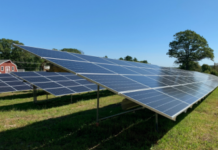
WASHINGTON – The nation’s real gross domestic product rose at an annual rate of 1.3 percent in the first quarter, little more than half the previous quarter’s 2.5-percent gain, in an advance report released today by the U.S. Department of Commerce’s Bureau of Economic Analysis.
The BEA credited the increases in personal consumption spending and state and local government spending, which were partly offset by decreases in residential construction, private inventory spending and federal spending, and a rise in imports.
But growth in the GDP – the total goods and services produced by labor and property in the United States – was the smallest in four years, Bloomberg News noted, and lagged the 1.8-percent median forecast of 83 economists surveyed by the wire service.
Real residential fixed investment – mostly housing construction – decreased 17.0 percent in the first quarter, slowing from declines of 19.8 percent in the final quarter of 2006 and 18.7 percent in the third.
Nonresidential fixed investment increased 2.0 percent after falling 3.1 percent in the fourth quarter and rising 10 percent in the third (nonresidential construction rose 2.2 percent after edging up 0.8 percent in the fourth quarter, while equipment and software purchases rose 1.9 percent after falling 4.8 percent in the fourth quarter).
Current-dollar GDP – the market value of the nation’s goods and services output – increased 5.3 percent in the first quarter to $13.3 trillion after rising 4.1 percent in the fourth quarter and 3.8 percent in the third.
Real personal consumption expenditures increased 3.8 percent in the first quarter, after rising 4.2 percent in the fourth and 2.8 percent in the third.
“A lot of the drivers in the economy, with the exception of consumer spending, are slowing and holding back growth,” Kevin Logan, senior market economist at Dresdner Kleinwort in New York,” told Bloomberg. “Given the Fed’s focus on inflation right now, they’re not in a position to stimulate growth. The Fed is on hold in the near term.”
The BEA emphasized that its “advance” estimates are based on incomplete data; its more-comprehensive “preliminary” estimates for the quarter will be released May 31.
Additional information is available at www.bea.gov.











